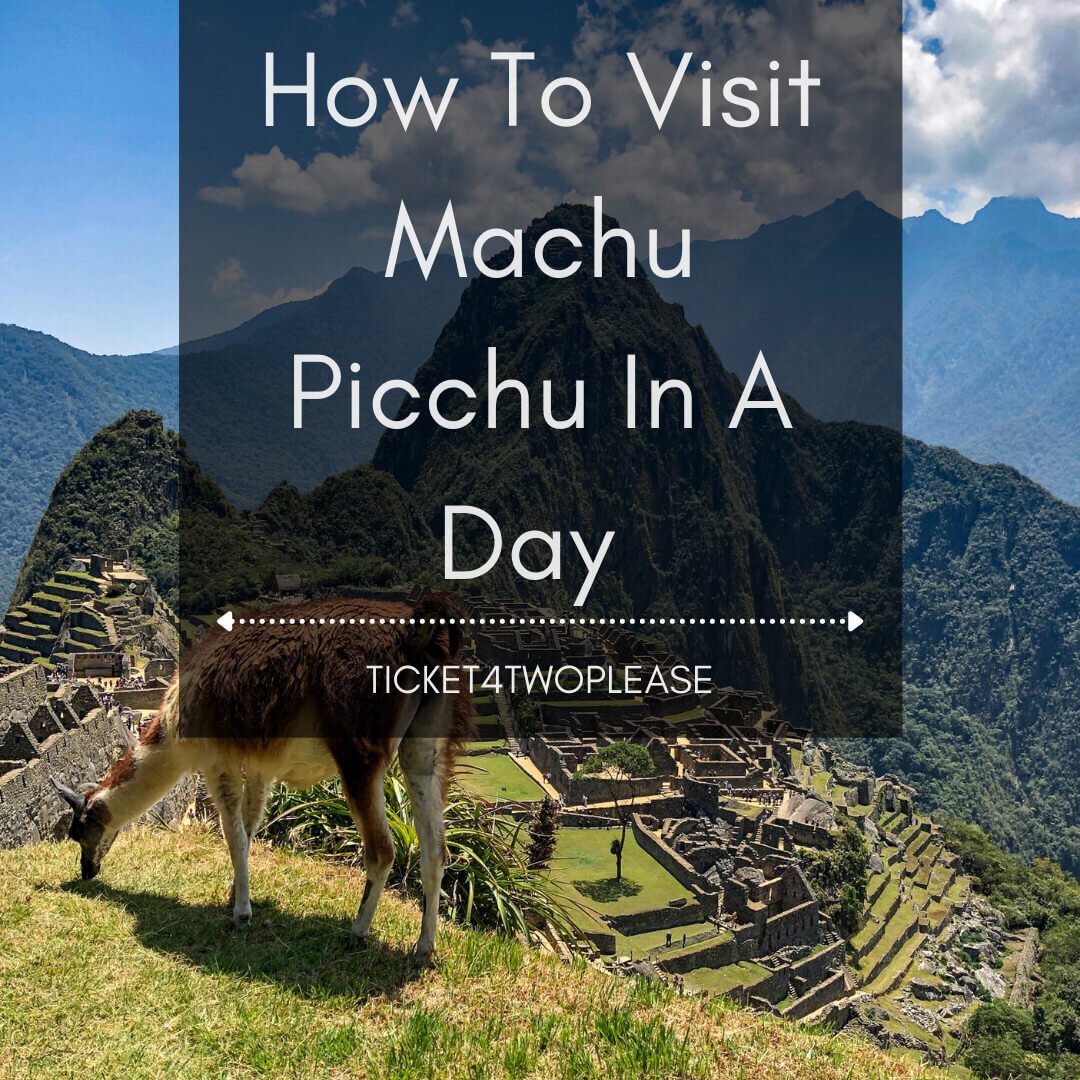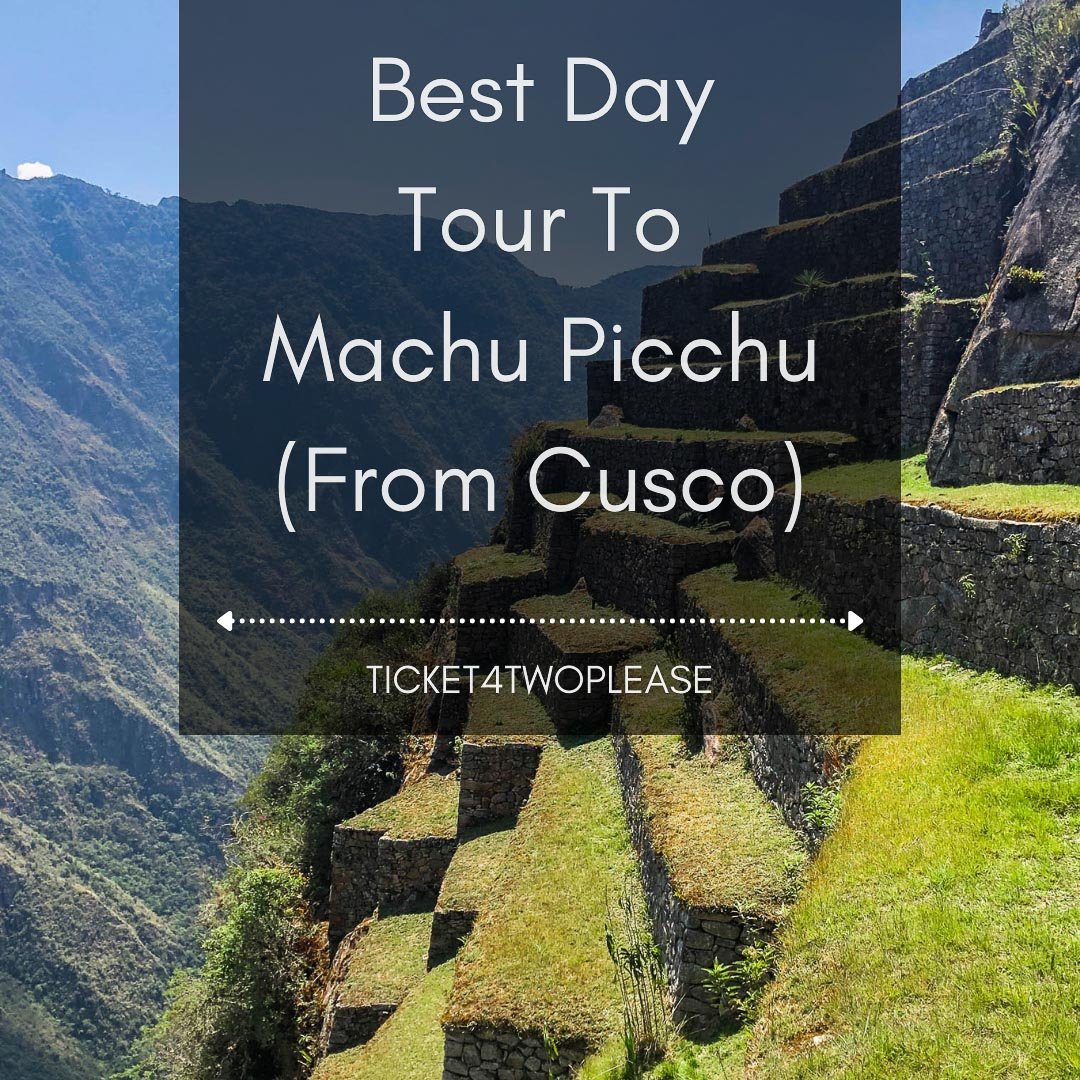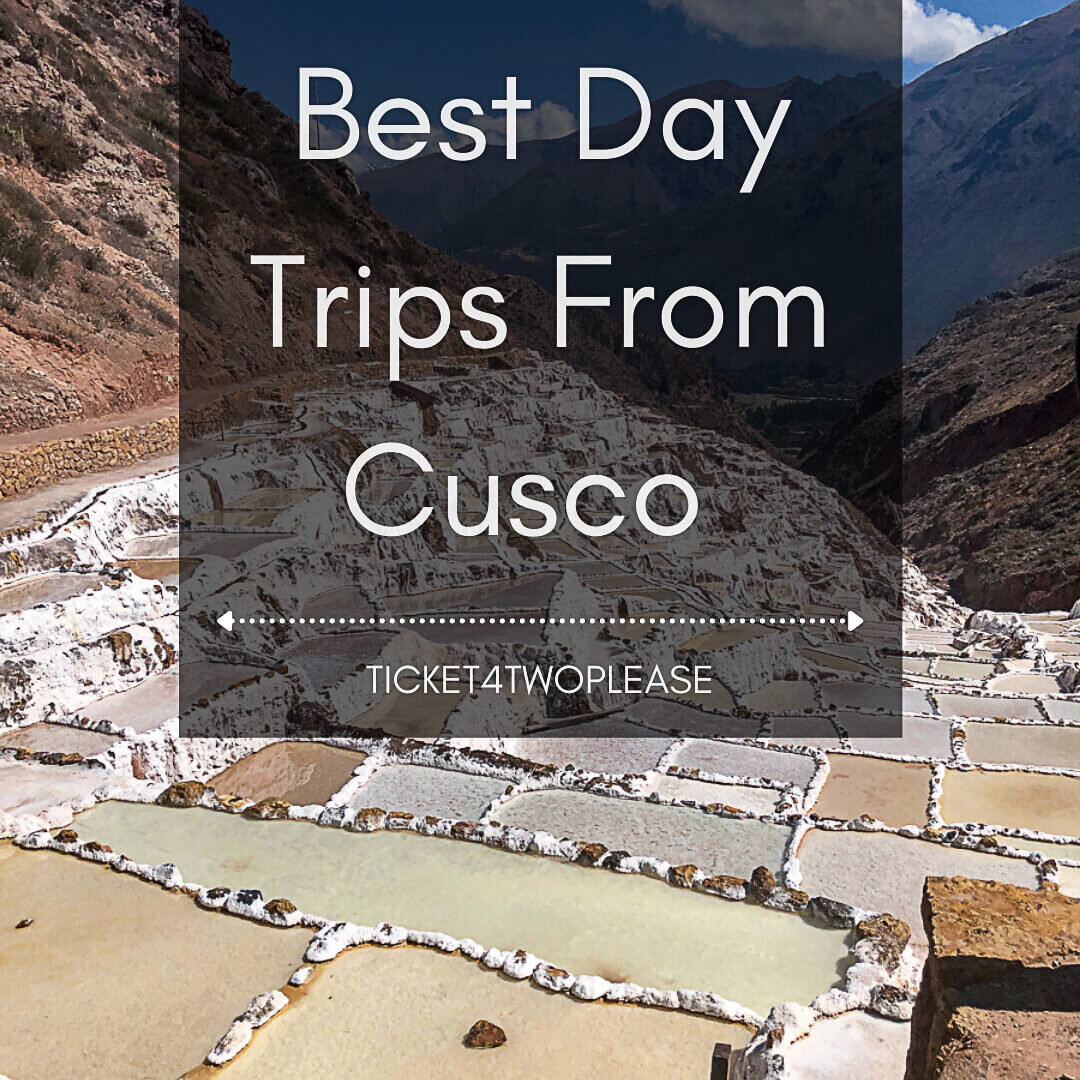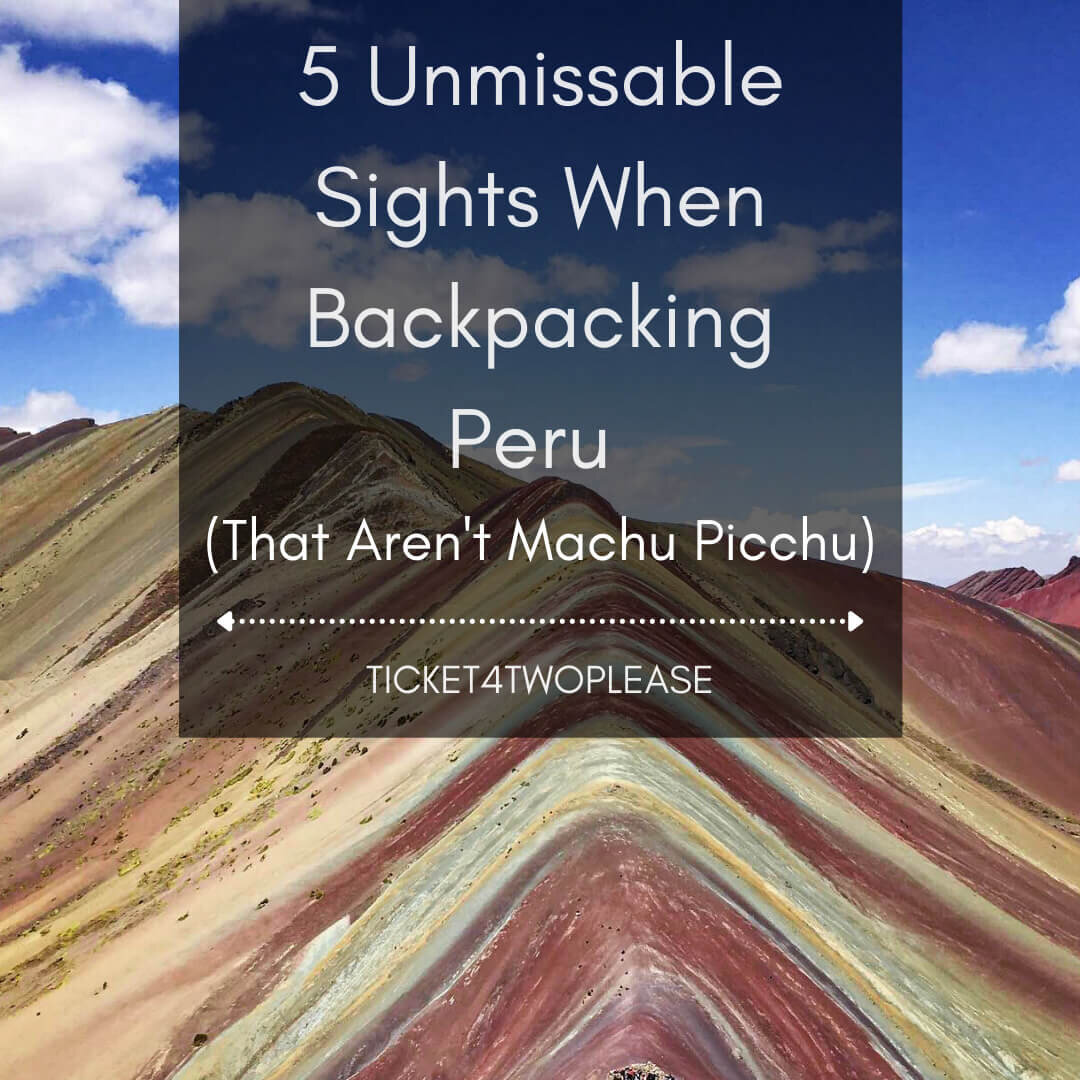10 Things You Need To Know Before Backpacking South America
Amazonian rainforest, Incan ruins, Andean Peaks and an unfathomable number of llamas - South America has it all.
From the white-sandy beaches in Colombia to the spectacular ice-capped mountains in Patagonia, South America is an incredibly diverse continent that is waiting to be explored.
Backpacking through South America is a once-in-a-lifetime adventure and is sure to be a genuinely memorable undertaking.
In this guide, we are going to walk you through 10 things you need to know before backpacking South America so that you’re prepared for what is in store.
Disclaimer - this blog post contains affiliate links where we can earn a commission, if you make a purchase through them (at no extra cost to you).
South America is a predominantly Spanish-speaking continent
Starting with the basics here, South America is predominantly Spanish-speaking. If you are familiar with Spanish, this is definitely going to help you during your backpacking adventure.
Though English is widely spoken throughout the continent, brushing up on your Spanish is certainly going to be beneficial. A great way to do this is by downloading the Duolingo app. We’ve found it to be one of the best apps to use when travelling.
Having said that, we were able to get by just fine throughout the continent without knowing any Spanish at all. That was until we ended up in a Bolivian hospital for two nights with a parasite and salmonella. Not having any Spanish between us at that point wasn’t quite as stress-free as it was for the rest of the trip.
Huacachina Oasis, Peru
The most notable exception to the Spanish-speaking continent is Brazil. The world’s 5th largest country principally speaks Portuguese. Again, English is widely spoken in Brazil, but if you plan to see some of the incredible places to visit in Brazil, it will be useful to know at least a few key phrases in Portuguese.
Some of the smaller nations in the North do not tend to speak Spanish or Portuguese. For example, Dutch is the official language of Suriname, whereas in Guyana, English is the most commonly spoken language.
While we travelled around, we always had our South America Guidebook with us - it was helpful when we needed a few key phrases in each language and a suggestion of where to venture to next.
The altitude in parts of South America can really get to you
The thing with altitude is that it can affect you even if you’re not doing any strenuous activity whatsoever. Simply walking around the streets of a new city can make you feel more fatigued than it ordinarily would.
Altitude sickness has the same symptoms as a general sickness - nausea, dizziness, fatigue, etc. The difference is that rather than a bacteria or infection causing you to be ill, it’s actually your body struggling to adapt to changes in oxygen levels.
In order to combat the effects of altitude in South America, it’s important to travel slower and gain elevation gradually. Flying directly from Europe or North America to La-Paz, the world’s highest capital city (3690m above sea level), and going straight on a demanding 3-day jungle trek isn’t going to end particularly well.
Coca Tea - a great remedy for altitude sickness
Instead, take a few days to acclimatise in each new destination as you gain in altitude. Take a couple of rest days and let your body get used to the new oxygen levels.
If you do start to experience the symptoms of altitude sickness, then you need to get hold of some Coca Tea. Made from the same leaf used to make cocaine, Coca Tea is able to alleviate mild symptoms of altitude sickness without you having to visit a doctor.
Workers in the higher regions of the Andes, such as those in Peru, chew coca leaves in order to enhance their physical performance at high altitudes, as well as reduce any discomfort they may be experiencing. We’d recommend just sticking to the tea, though.
As one of the best day trips from Cusco, Rainbow Mountain is a very popular tourist destination in South America. At 5200m above sea level, though, it can often be one of the places where people suffer from the altitude the most.
Rainbow Mountain (5200m above sea-level)
Popular South America backpacking destinations at high altitude that you need to be aware of:
Rainbow Mountain (Peru) - 5200m
Tatio Geysers (Chile) - 4000m
Lake Titicaca (Bolivia and Peru) - 3840m
La Paz (Bolivia) - 3690m
Uyuni Salt Flats (Bolivia) - 3656m
Cusco (Peru) - 3400m
Note: Altitude sickness can start to take an effect at much lower altitudes. Many tourists, for example, report symptoms in Arequipa (Peru), despite it only being 2335m above sea-level.
South America is not as dangerous as people make out
As with any country or continent on the planet, there are going to be some areas that are safer to visit as a tourist than others. This happens everywhere, though.
On the whole, however, South America is a very backpacker-friendly destination, and even when getting away from the traditional backpacking routes, you will find yourself feeling safe and secure.
Nowhere is this more apparent than in Colombia. In recent years, Colombia has gone through a renaissance and has transformed itself into one of the most backpacker-friendly countries on the continent.
Guatape - too dangerous for tourists to visit at the beginning of the century
Colombia is no longer the country our parents grew up hearing about on the news. Medellin, once home to the notorious drug lord Pablo Escobar, is now a vibrant, contemporary city that has strived to overturn its fortunes. Walking around the El Poblado district, it’s hard to imagine that this city was once considered the most dangerous in the world.
Visiting Comuna 13, infamous for its staggeringly high rates of murder in the 90s, has now become one of the most remarkable things you can do in Colombia. The country, and indeed the entire continent of South America, has made incredible strides in recent years to promote safety and tourism.
Due to political instability and increased crime rates, Venezuela is the only country in South America that we would recommend against visiting.
This ranked list of the safest countries to visit in South America only helps to emphasise just how safe the entire continent has become.
There is LOADS to do and see in South America
Honestly, you are going to be truly spoilt for choice with activities to try, things to do and places to visit in South America. Even if you are planning on staying for 6 months, you’d be rushing to see every South American country.
Instead, it’s best to split your trip up or plan to do a few different trips over a period of time. Perhaps a 6-week South America backpacking itinerary, starting in Colombia and ending in Brazil, might be more appropriate.
Huaca Pucllana, Lima
Maybe do the South - Argentina, Uruguay and Chile - in one trip, and then plan to do the rest of the continent another time? Whichever way you plan to explore South America, you are going to be amazed at how many things you can fit in.
This also means that you are going to be amazed at how many things you are going to have to miss out on - unless you have an unlimited budget with unlimited time (we wish), you’re going to have to prioritise where you spend money and what activities you do.
When we travel, we always list the must-see destinations for our trips and which places we aren’t fussed about missing out on. It’s all about learning how to survive on a trip as a couple. Prioritise and plan for South America, and you’ll definitely be able to see everything you want to!
Christ the Redeemer, Rio de Janeiro
Colourful Streets of Cartagena, Colombia
The food in South America is incredible
What better way to embrace the Latin American culture than through food? South America is brimming with incredible flavours waiting to be discovered by eager backpackers.
Here are some of our favourites that we don’t want you to miss out on:
Lomo Saltado, a traditional Peruvian Dish, is a stir-fry dish combining marinated strips of sirloin steak with onions, tomatoes, soy sauce and a wonderful blend of spices. The ingredient that brings it all together is Amarillo sauce, a staple in Peruvian cuisine. Best of all, the dish is traditionally served with both french fries and white rice - who doesn’t enjoy carbs-on-carbs?
Another Peruvian classic, Ceviche, is a seafood dish made from raw fish that is cured in fresh citrus juice. It could be considered to be South America’s version of Sushi. Usually served alone, with an abundance of seasonings, ceviche is one of the tastiest street foods in South America.
Peruvian Ceviche
Churrascaria is essentially an all-you-can-eat Brazilian barbeque. The barbeque is served Rodízio style, where waiters come around to your table with large skewers of barbequed meat and continue to do so until you signal that you’ve had enough food. The meat alone would be worth paying for, but the service is what really makes Churrascaria so special.
Empanadas can be found all throughout South America and serve as a brilliant grab-and-go style snack. The hand-sized savoury pies are best described as fried pastry with a meat and/or vegetable filling. They are delicious!
Guinea Pig is maybe not something you’ve ever considered trying before, but in the South American highlands (parts of Ecuador, Chile, Peru and Bolivia), it is eaten for special occasions. Served with french fries and a salsa-style dip, guinea pig is definitely worth trying, at least for the story if nothing else.
Pisco Sour - a classic Peruvian Cocktail
Uber isn’t considered as legal, or illegal, in many South American countries
Despite being one of the most popular forms of transport in South America, Uber isn’t considered legal or illegal by many countries. For years, Uber has been operating in a legal grey area where it isn’t technically legal to use the service, but it is also not against the law. It’s confusing.
In Colombia, for example, it is quite easy to get an Uber, but the driver will often ask somebody to sit in the front seat so as not to draw attention to the fact they are offering an Uber service. Don’t expect to be seeing any cars with Uber stickers on them in Bogota.
In Brazil, however, the story is certainly different. Brazil is the second largest user of Uber in the world, after the US, and there are more daily users of Uber in Sao Paulo than in any other city on the planet - including the metropolis of New York. As a result, when arriving at any major airport or bus terminal, you will immediately notice large ‘Uber’ signs outside, indicating the exact pick-up location for the service.
We advise using your judgement and asking locals working in hostels and cafes. If they frequently use Uber, then you’re probably going to be okay. Besides, for the most part, the risk of using Uber is on the driver, not the passenger.
Machu Picchu is going to be the biggest expense of your South America trip - but definitely worth it!
It’s one of the ancient wonders of the world and features firmly on the top bucket list destinations for travellers from all around the globe. Machu Picchu, therefore, isn’t going to be something you can afford to do cheaply.
If you are looking to do the traditional Inca trail to Machu Picchu, it is a 3-4 day trek that is likely to set you back in excess of £700 (over $900). This cost generally covers transportation to the trailhead, a guide, porters for your luggage, food, tents and entry to Machu Picchu. It’s a once-in-a-lifetime experience, but it’s going to be costly.
Machu Picchu
It is also possible to visit Machu Picchu in a day. In this scenario, a do-it-yourself day trip costs around £150 ($200), whereas an organised tour will amount to around £200 ($275). Both are significantly cheaper options than the Inca trail but still very expensive in terms of one-day activity while on a backpacking budget.
Despite the cost, however, we highly recommend going to visit Machu Picchu. It really is as incredible as all the photos make it out to be. We opted for an amazing day tour to Machu Picchu, and it was the best decision we ever made - it was an incredible experience!
Another justification for paying all that money is that, due to over-tourism, it is likely that Machu Picchu will be closed off to the public within the next decade. It’s one of the sad realities of tourism, but if you don’t want to miss out, you’d best factor Machu Picchu into your next backpacking trip.
Stone Wall of an Incan House at Machu Picchu
Overnight buses in South America are better than in Europe or North America
Have you ever had to get an overnight bus in Europe or North America? Have you ever been cramped and claustrophobic in a Greyhound bus in the US, or bored and uncomfortable on a National Express journey in the UK? Well, you’re in for a treat in South America.
The standard of overnight buses on the continent is far and away the best we have experienced anywhere in the world (with the exception of South Korea - we recently visited and there transport standards were a cut above!)
Street Graffiti in Bogota, Colombia - an 18-hour overnight bus from Quito, Ecuador
On almost every overnight bus we took, we were greeted with free food and refreshments, working charging ports for our phones, a screen to watch a movie (granted, they were in Spanish, but pictures are always fun too) and fully-reclinable, spacious seats.
It meant there were several times when, instead of booking a hostel for the night, we opted for an overnight bus because we knew they were so comfortable. We would have to be in a serious hurry to do that in Europe.
South Americans are obsessed with Football (Soccer)
You may already be aware of this, but it isn’t until you touch down on the continent that you start to understand how revered the beautiful game is in South America. The first ever FIFA World Cup was hosted by Uruguay in 1930, and ever since, the entire continent has been hooked on the famous sport.
The popularity of football in South America is primarily attributed to the fact that it is a game that can be played by almost anyone, regardless of their socio-economic status. This means that even children living in the favelas of Rio de Janeiro can be exposed to the game from a very early age. Spend 48-hours in Rio de Janeiro and you’ll soon realise how much Brazilians love football.
Pacaembu Stadium, Sao Paulo
Many of the greatest players to have ever graced a football pitch, the likes of Diego Maradona, Lionel Messi and Pelé, were born in South America. As such, the sport continues to act as a major cultural component of the continent’s identity.
You only have to walk down one of the side streets in Cartagena, watching vendors flog replica Colombia jerseys, or spot alpacas adorning the Peruvian national strip to appreciate just how ingrained football is within Latin American society. They live and breathe it.
If there is a major football match during your stay in Sao Paulo for example, don’t expect to be able to get anywhere in a hurry. Even the taxi drivers will regularly pull up to the side of the road to check the score.
One of the many Flamengo fans in Rio de Janeiro
Flights from one country to another are pretty cheap in South America
Low-cost airlines such as Azul (Brazil), FlyBondi (Argentina), Sky (Chile) and Viva (Colombia) regularly fly between the major cities in South America, meaning you can easily find a cheap-flight alternative to the 24-hour overnight bus service.
Viva, for example, offers direct flights between Lima and Bogota for as little as £65 ($90), which is very reasonable for a 3-hour flight. Similarly, Azul offers a service between Santiago and Rio De Janeiro starting from £70 ($100).
Unfortunately, these prices may not be comparable to £5 ($10) fares for some European Ryanair flights, but it’s not to say that multiple flights are out of the question when you’re creating your backpacking budget.
Orla boarding a Viva Air flight from Cartagena to Lima
There we have it, 10 things you need to know before backpacking around South America. We hope this guide has prepared you for your adventure and inspired you to visit the amazing continent of South America.



















